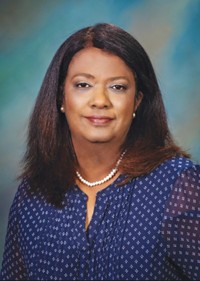Advertisement
Grab your lab coat. Let's get started
Welcome!
Welcome!
Create an account below to get 6 C&EN articles per month, receive newsletters and more - all free.
It seems this is your first time logging in online. Please enter the following information to continue.
As an ACS member you automatically get access to this site. All we need is few more details to create your reading experience.
Not you? Sign in with a different account.
Not you? Sign in with a different account.
ERROR 1
ERROR 1
ERROR 2
ERROR 2
ERROR 2
ERROR 2
ERROR 2
Password and Confirm password must match.
If you have an ACS member number, please enter it here so we can link this account to your membership. (optional)
ERROR 2
ACS values your privacy. By submitting your information, you are gaining access to C&EN and subscribing to our weekly newsletter. We use the information you provide to make your reading experience better, and we will never sell your data to third party members.
Education
Celebrate Great Teachers
by Rudy M. Baum
May 16, 2011
| A version of this story appeared in
Volume 89, Issue 20
Two great chemistry teachers were in the news recently, both honored for their success in the classroom.
On May 2, Michelle Shearer, a high school chemistry teacher in Maryland’s Frederick County Public Schools system, was named the 61st National Teacher of the Year by the Council of Chief State School Officers (CCSSO). The next day, National Teacher Appreciation Day, President Barack Obama hosted Shearer and the other State Teachers of the Year at a reception in the White House Rose Garden.
“Michelle’s specialty,” President Obama said during the reception, “is taking students who are normally underrepresented in science—minorities, women, students with disabilities, even students who say equations and formulas are just not their thing—and helping them discover the scientist within.”
In April, Brian Coppola, a University of Michigan chemistry professor, was named one of the three finalists for the 2012 Robert Foster Cherry Award for Great Teaching. Conferred biennially by Baylor University, the award is the only national teaching award presented by a college or university to an individual for exceptional teaching and carries a monetary award of $250,000. The winner will be announced in spring 2012 and will teach in residence at Baylor in fall 2012 or spring 2013. Each of the three finalists will receive $15,000 plus $10,000 for his or her home department to foster the development of teaching skills.
You can download a press release on Shearer from the CCSSO website that includes her curriculum vitae and an extensive essay covering, among other topics, her professional biography, philosophy of teaching, and her thoughts on education issues and trends. “Although chemistry can be an ‘intimidating’ subject that is often viewed as difficult for students to grasp,” Shearer writes, “I have always embraced this simple idea: Chemistry is everywhere, and thus chemistry is for everyone. Everyone. Not just college-bound students, students of a particular ethnic group, or even students of a certain age.”
She also writes: “Regardless of the latest technological advances or educational trends, each year I come back to the same central idea to anchor my teaching: that it is the human element I know to have the greatest effect in my classroom. … I judge the success of a school year on the relationships I have developed with my students and the investment we have made in each other to achieve four goals: to connect with chemistry, take and pass the AP exam, prepare for college, and explore STEM—science, technology, engineering, and math— careers.”
On his website, Coppola writes, “Historically, higher education does an outstanding job in transforming high school graduates—all in the space of 10 years or so—into educated scholars who can identify and advance the state of the art in any research field. However, faculty members, regardless of their specific disciplinary area, are also (by definition) the caretakers of that system of education—and yet, the level of attention paid to a future faculty member’s responsibilities for education pale compared with the elaborate system of preparing them for research. For most of my career, I have been interested in one idea: Individuals who become faculty members should be as prepared for the full range of obligations they will encounter in an academic career as they are for carrying out research.”
Like Shearer, Coppola emphasizes personal contact in the lab. Among the areas he has focused on is “adapting the concept of a ‘research group’ (which is the mechanism by which faculty members get big-idea research done) to the idea of forming ‘teaching groups’ (that is, for faculty members, and any students in the department interested in future faculty careers, to collaborate on teaching and learning in the same way that they do in research).”
Great teachers start with a personal commitment to their students. What a concept.
Thanks for reading.



Join the conversation
Contact the reporter
Submit a Letter to the Editor for publication
Engage with us on Twitter